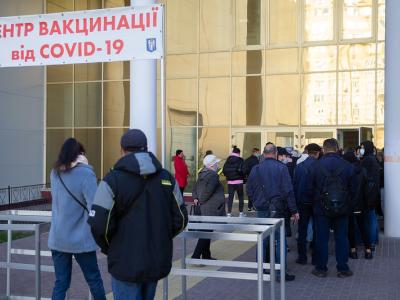Interventions tied to lower COVID rates in meat processing plants
Almost one in five meat processing workers in Nebraska contracted COVID-19 from April to July 2020, but after facility-wide mitigations and strategies were put in place, new cases appeared to decrease, according to an Emerging Infectious Diseases report yesterday. The researchers found that men and Hispanic/Latinos showed the highest burden in case numbers and severity.
Facility information was available for 13 meat processing sites, and 8 showed significant decreases in case incidence, ranging from 1.22 to 16.58 fewer cases per 1,000 people (median 3.20) 10 days after implementing universal mask policies and physical barriers. Four facilities showed no statistically significant change, including the two that added mask policies only, and another showed a significant increase, from 0.48 to 2.09 cases per 1,000 people (P = 0.008).
Out of 5,200 total COVID patients among approximately 26,000 meat processing workers, 225 (5.3%) needed hospitalization for symptoms, 83 (1.6%) were admitted to the intensive care unit (ICU), and 21 (0.4%) died. At least 501 cases (9.6%) were asymptomatic, although the lack of information for 264 as well as a general lack of mass testing means more probably went unrecorded.
Two thirds of COVID infections were in Hispanic or Latino people, and the researchers found that this subgroup represented 73% of workers who needed hospitalization, 78% who needed ICU care, and 68% of deaths. Men made up 58% of the cases, 72% of those hospitalized, 78% of those in the ICU, and 81% of deaths.
"Our results indicate significantly reduced incidence of COVID-19 cases in 62% of studied facilities following adoption of universal masking and physical barrier interventions," the researchers write, although they also emphasized the importance of enhanced ventilation. "Increased multilayered IPC [infection prevention and control] strategies, rapid contact tracing, and accessible testing are critical to identifying asymptomatic and presymptomatic cases and interrupting silent transmission."
Feb 16 Emerg Infect Dis study
Experts highlight best imaging for COVID-related musculoskeletal issues
Computed tomography, magnetic resonance imaging (MRI), and ultrasound scans should be used to help diagnose and treat COVID-19 symptoms, according to a review published today in Skeletal Radiology.
While COVID-19 infection is most known for its respiratory ailments, musculoskeletal symptoms such as muscle pain and inflammation, peripheral neuropathy, joint pain, and clotting issues can cause short- or long-term issues, the researchers write.
The authors discuss symptoms caused or related to COVID-19 infection across muscles, nerves, joints, soft tissues, and bones, as well as which imaging techniques may be best to identify them.
For example, myositis (muscle inflammation) and its more severe complication, rhabdomyolysis, can best be detected via MRI, but electromyography, nerve conduction studies, creatine phosphokinase levels, and reported weakness can also help. Radiologists should look for muscle edema as well as disease patterns on the scan including homogeneous hyperintense signals or "stipple signs" of myonecrosis.
"Many patients with COVID-related musculoskeletal disorders recover, but for some individuals, their symptoms become serious, are deeply concerning to the patient or impact their quality of life, which leads them to seek medical attention and imaging," said corresponding author Swati Deshmukh, MD, in a Northwestern University press release. "That imaging allows us to see if COVID-related muscle and joint pain, for example, are not just body aches similar to what we see from the flu—but something more insidious."
The researchers also note in the paper that some conditions may be associated with ICU treatment, such as corticosteroid use, which can cause myopathy, and prone positioning, which they speculate could be related to some peripheral neuropathy because of stretch and traction injuries.
"Familiarity with incidence, etiology, and imaging findings of COVID-19 related musculoskeletal manifestations is important for radiologists in order to optimize imaging report interpretation and patient care," they conclude.
Feb 17 Northwestern University press release
Emergency funds for Ebola outbreaks; DRC virus tied to earlier outbreak
In the latest Ebola outbreak developments, Mark Lowcock, head of the United Nations Central Emergency Response Fund, announced today on Twitter that he allocated $15 million for responses to new outbreaks in the Democratic Republic of the Congo (DRC) and Guinea.
In the DRC, preliminary genetic analysis suggests that the virus is related to an earlier outbreak, Reuters journalist Fiston Mahamba said yesterday on Twitter. The result suggests that the source is likely related to contact with a survivor of the earlier event and not a new virus introduction from an animal or other source.
So far, four infections and two deaths have been reported in the DRC flare-up, which is occurring in the region where a large 2-year outbreak was declared over in June. The index patient in the cluster is a woman who was married to an Ebola survivor. In rare instances, survivors can harbor the virus in "immune-protected" body sites such as the eyes or testes.
The World Health Organizaton's (WHO's) African regional office said in its latest weekly health emergencies update that the DRC outbreak is concerning, because the virus has spread to other health zones and areas and that one healthcare worker is among the confirmed cases.
Regarding the Guinea outbreak, based on data as of Feb 14, it said the reemergence is gravely concerning, and though health officials have responded quickly, they face challenges of unsecure burials, inadequate infection prevention and control measures, and lack of rapid tests at the hospital in the outbreak region. Yesterday, the Africa Centers for Disease Control and Prevention (Africa CDC) said Guinea had 17 cases, 5 of them fatal.
Feb 17 Mark Lowcock tweet
Feb 16 Fiston Mahamba tweet
Feb 16 WHO African regional office weekly report
Feb 16 CIDRAP News scan
Global flu detections still spotty, mostly from flu B
Over the last half of January, flu activity across the world stayed mainly at sporadic levels, despite increased testing to assess if the virus is circulating along with COVID-19, the WHO said in its latest update.
Most of the Northern Hemisphere, where the flu season would normally be under way, only reported sporadic cases. In China, flulike activity was well below usual levels, with southern China reporting another small rise in influenza B detections.
Western Africa's flu activity continued, with different countries reporting different stains, and in Eastern Africa, Kenya has reported H3N2 and influenza B in recent weeks.
In Southeast Asia, H3N2 activity continues to be reported from Laos.
Globally, of the few respiratory samples that tested for positive for flu at WHO-affiliated labs, 81.1% were influenza B, and of the subtyped influenza A samples, 61.8% were H3N2.
The WHO's flu vaccine strain advisors began their virtual deliberations today to assess and recommend the strains to include in vaccines for the Northern Hemisphere's 2021-22 flu season. They will also review zoonotic flu strains to see if any candidate vaccine strains are needed for pandemic preparedness.
Feb 15 WHO global flu update
WHO flu vaccine strain selection meeting information












